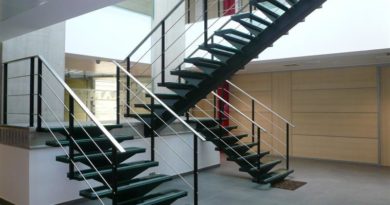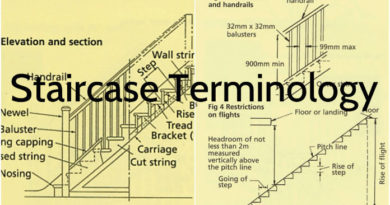TWO-STRINGER STAIRCASE | An Architect Explains
A Two-stringer staircase is one which has two stringers on both sides of the complete length of stairs and at least one stringer is embedded in a wall. The two-stringer staircase feels structurally more stable than single stringer stairs such as “Centre- stringer” and “Cantilever” stairs. There are two types of two-stringer stairs- closed or open.

The stringers may be “closed” – do not show the profile of the steps as seen in the image above. The steps are supported by two straight, solid beams into which, the treads are routed like this.
Or they may be ‘open’ so that the treads and risers are visible from the side, like the image below. They are also called “cut” stringers as they are “cut” to show the profile of the treads and risers from the side.
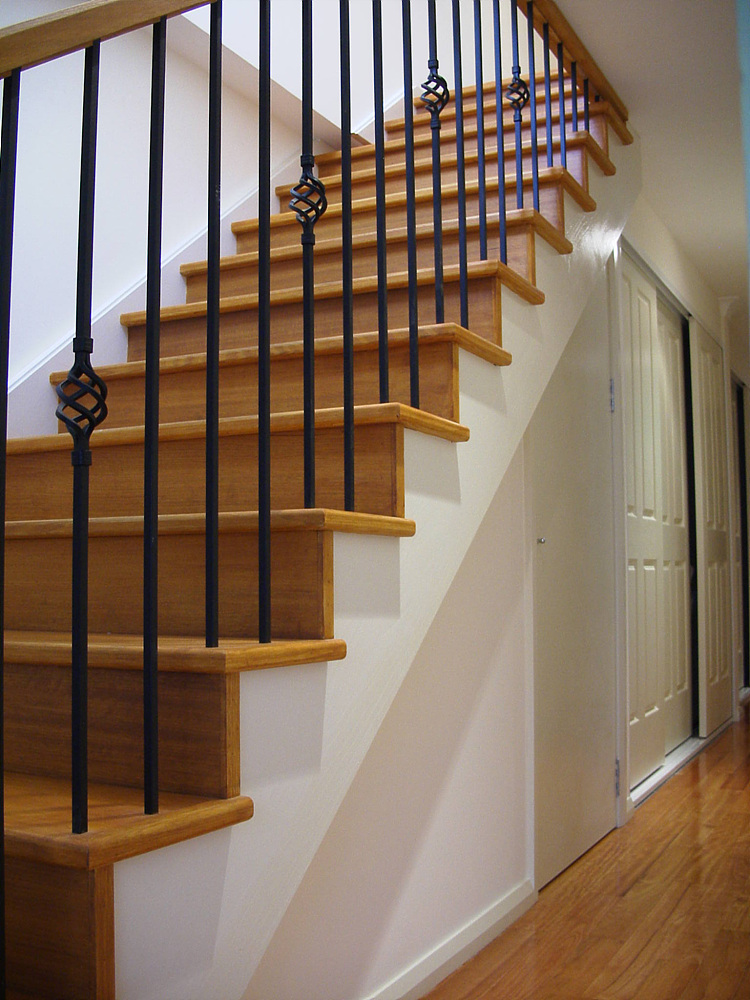
Two stringer staircases have both advantages and disadvantages. They can be constructed using different types of materials. To help you in the design of two-stringer staircases, as an Architect, I have listed guidelines under the following headings:
What are the materials used in two-stringer staircases?
What are the different design styles of two-stringer staircases?
WHAT ARE THE DIFFERENT TYPES OF MATERIALS USED IN TWO-STRINGER STAIRS?
WOODEN TWO-STRINGER STAIRS:
Wooden two-stringer stairs are very popular in western countries as they are a good green option. However, they are not common in India because of the exorbitant cost of the available types of hardwood – teak wood, hardwoods, sal etc.

CONCRETE TWO-STRINGER STAIRCASES:
Concrete two-stringer stairs are the commonest type of staircases in India. Usually one of the two concrete stringers is embedded in the wall (see picture). The concrete treads are finished with wood or stone (marble, granite, kota) slabs.
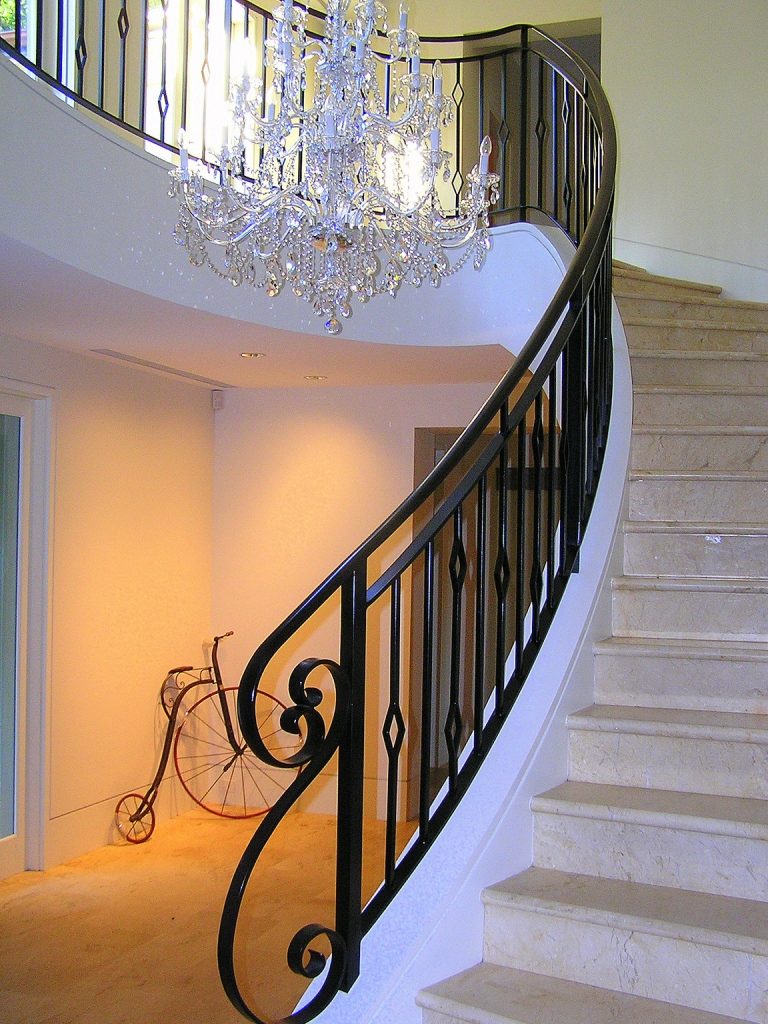
METAL TWO-STRINGER STAIRS:
In this type, the stringers are made of metal like steel or aluminum while the treads are made of wood, metal, glass or stone. See example below.

WHAT ARE THE DIFFERENT DESIGN STYLES POSSIBLE WITH TWO-STRINGER STAIRS?
TWO-STRINGER STAIRCASES WITHOUT EXPOSED SOFFIT:
The soffit of the staircase is not visible as the stringers are embedded in walls. See the picture below.

TWO STRINGER STAIRS WITH EXPOSED SOFFIT:
The soffit is visible as one stringer is free-standing. The staircase appears lighter and the space below the staircase can be used for placing furniture or artefacts as shown in this image.
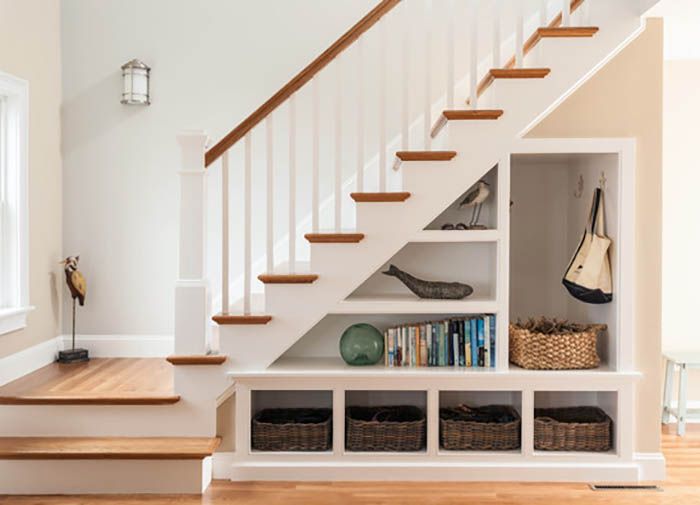
CURVED TWO-STRINGER STAIRS WITHOUT SOFFIT:
The curved stringers are embedded in curved walls and the soffit is not visible- therefore our attention is drawn to the curved walls as seen here.
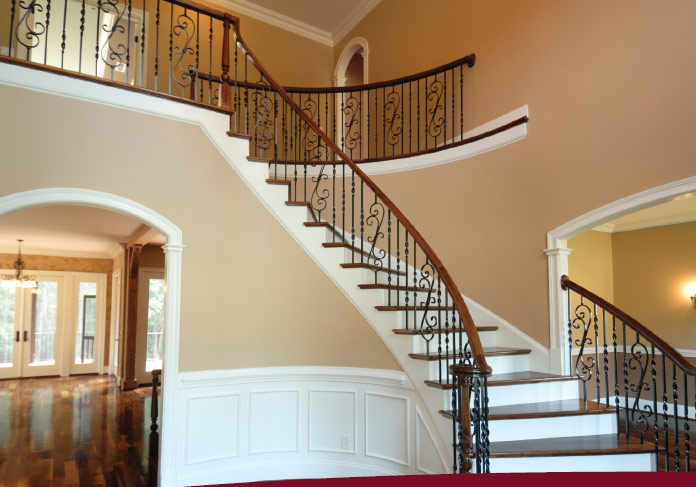
CURVED TWO-STRINGER STAIRS WITH EXPOSED SOFFIT:
The soffit of the curved staircase is visible – the effect is a free-standing sculptural piece and the focus is entirely on the staircase. Look at this image below.
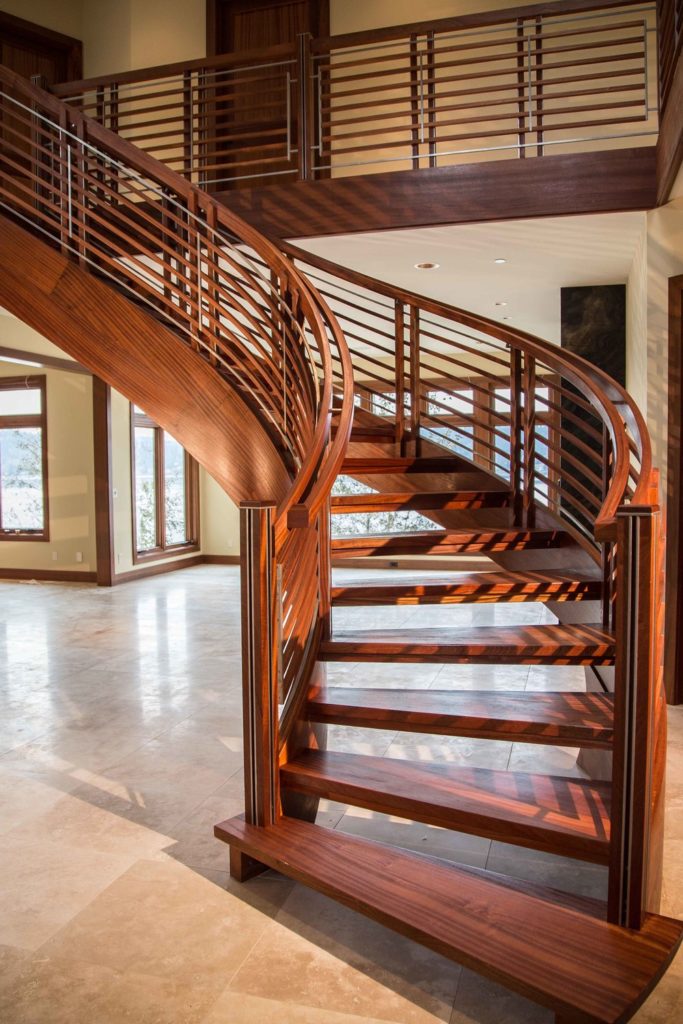
CLOSED STRINGER STAIRS:
The profile of the treads and risers is not visible. The stringers in the image below, are intentionally treated differently from the risers and treads to highlight the solid beam-like support.

OPEN ‘CUT’ STRINGER STAIRS:
The stringer is ‘cut’ to show the profile of the stairs. The stringer and stairs in the picture below, are treated differently from the walls to highlight the staircase in the white background.
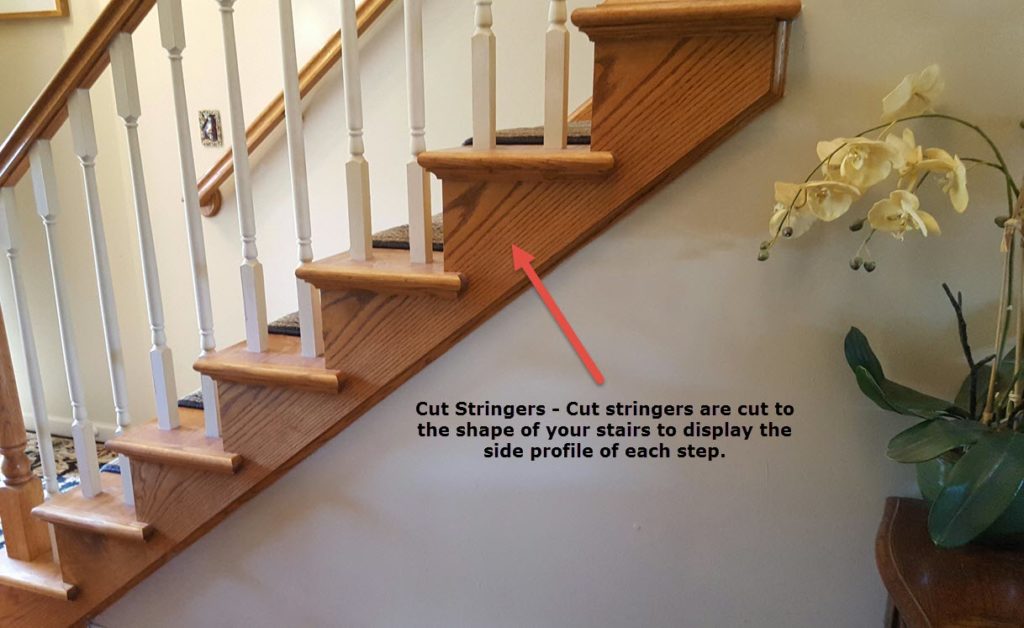
Or, the cut stringer blends with the white background while the treads and risers are treated with contrasting wood, so that the ‘cut profile’ gets highlighted. See below.
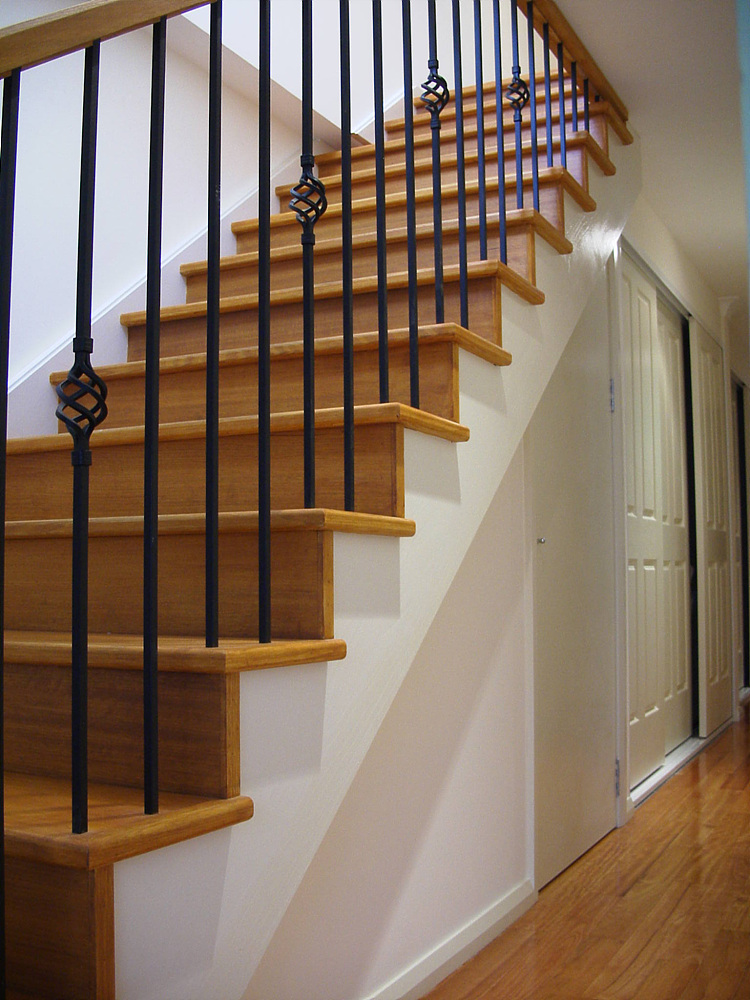
Related topics:
READ MORE:
For a concise guide on planning, designing and constructing a staircase, refer to the post on Building staircases on my blog: House construction in India
If you found this post useful, I would really love it if you pin it or share it. All it takes is a simple click on the “pin it” “like,” “share,” “tweet,” or Google+ buttons below the post.


